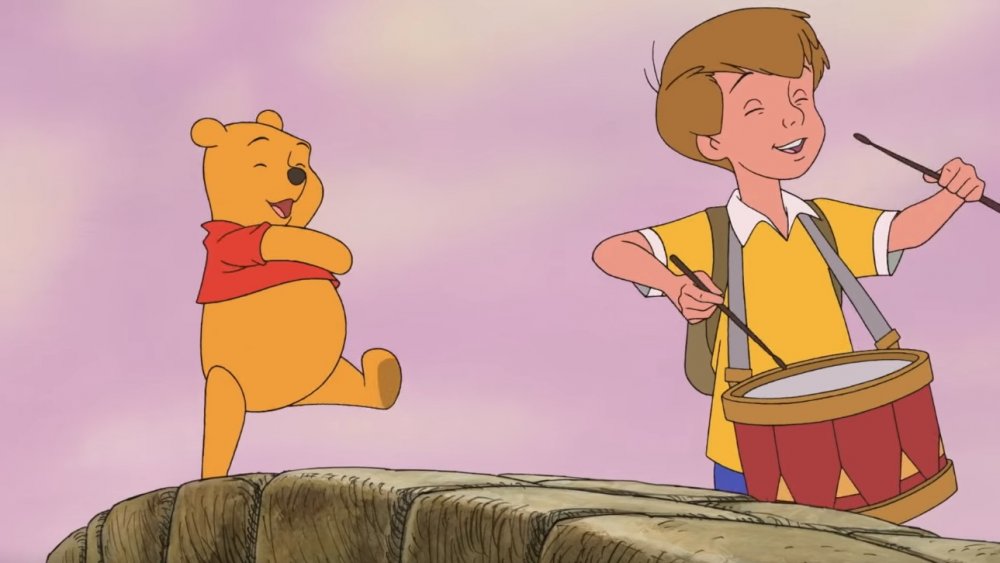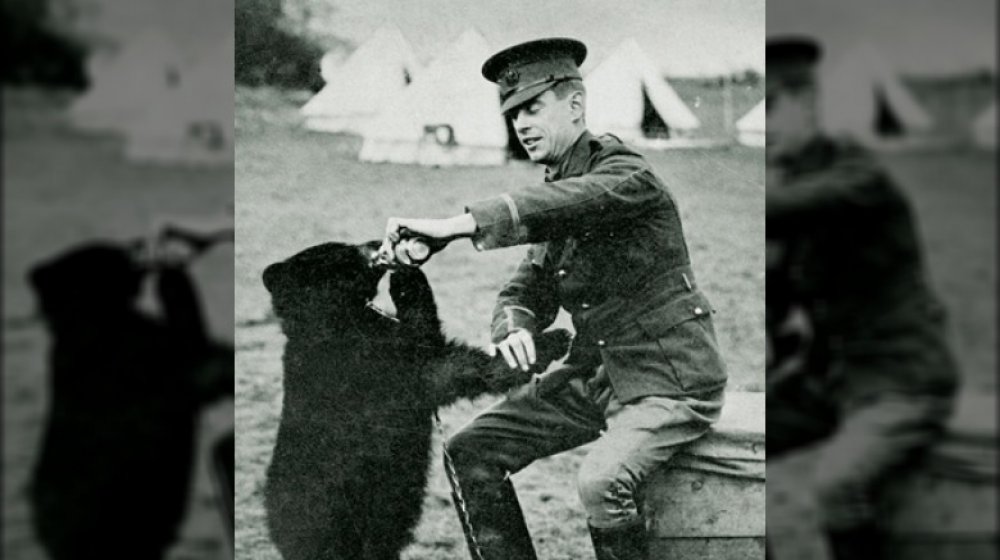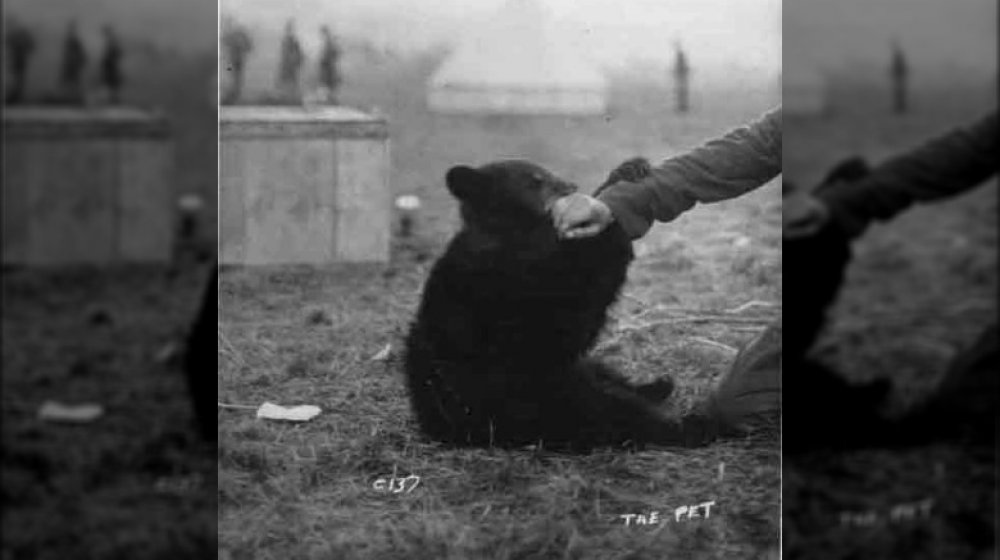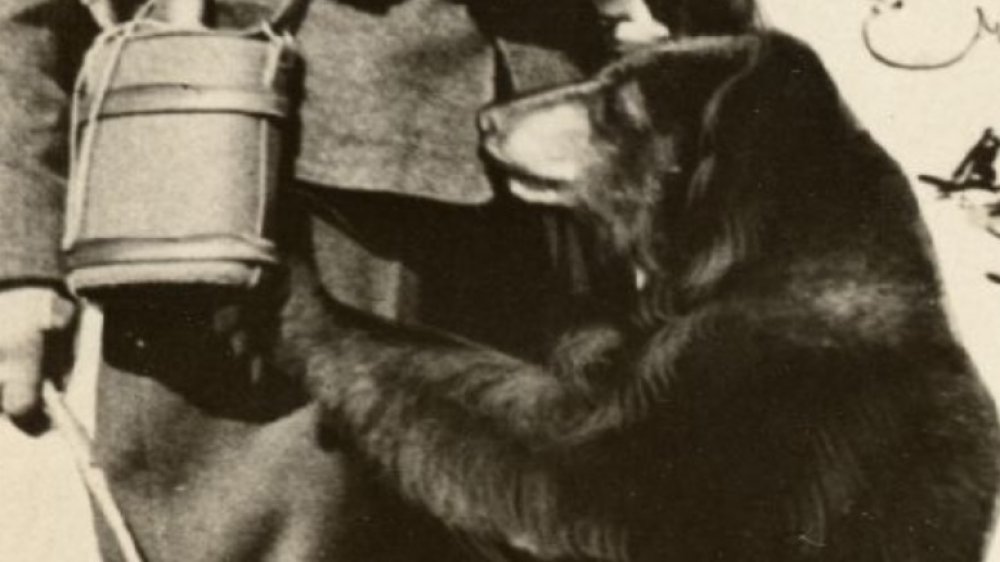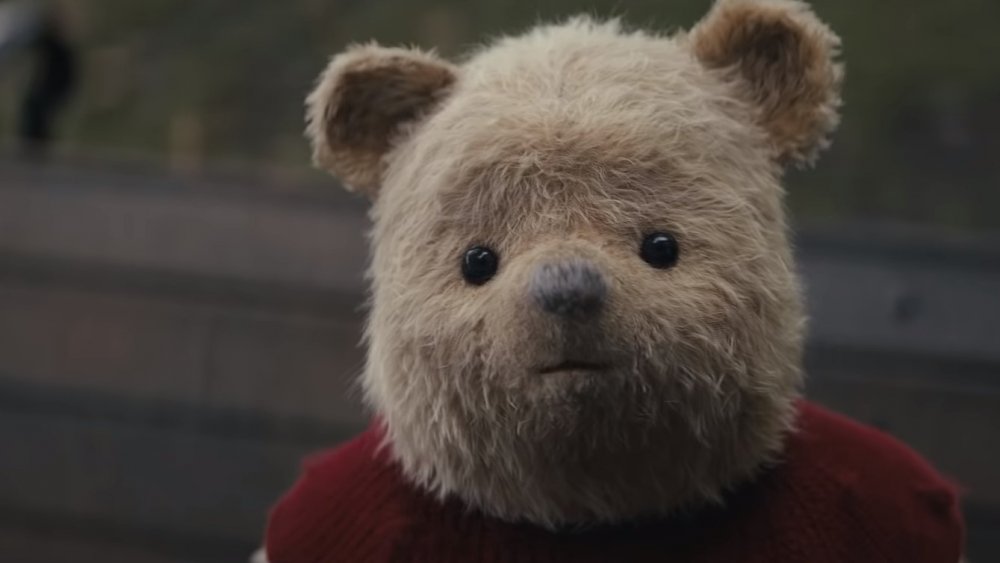The Real Winnie The Pooh Almost Fought In WWI
You'd be forgiven for not thinking that Winnie the Pooh (likes honey, dislikes bother) ever brushed up against the horrors of the Great War. We've been burned before: tall tales of Fred Rogers' cigar-chomping career as an elite special ops deadeye have floated around the internet for years, despite the fact that they belong squarely in the Neighborhood of Make-Believe. Captain Kangaroo, too, supposedly busted heads for the Allied Forces at Iwo Jima, but that, as Snopes has been kind enough to point out, is also malarkey.
And both of those guys were real, flesh and blood human beings. If Mister Rogers and the good Captain never saw that pink mist, the odds of an ursine cartoon getting close to the front lines seem awfully long. But the world is a backwards and confusing place where weirdness, more often than not, is afoot. Winnie the Pooh, the real Winnie the Pooh, came within spitting distance of bouncy, trouncy, flouncy, pouncy trench warfare.
The origins of Pooh
The story goes like this: A.A. Milne, the author of the Winnie the Pooh stories, based most of his characters on toys belonging to his young son, Christopher. At the head of the pack was the eponymous Winnie, a stuffed bear. Winnie (the toy) was named after an actual black bear named Winnipeg who spent time on display at the London Zoo.
It's a weird name, "Winnipeg." The sort of name with a story behind it. The OG Winnie found her way to the UK thanks to a hell of an ordeal: in August of 1914, she was being held by a Canadian hunter in White River, Ontario. The hunter had killed the young cub's mother and decided to get into that oldest and most prestigious of businesses — namely, in a dark twist on classic Paddington story structure, selling baby bears at train stations.
Enter a Canadian Army Veterinary Corps officer by the name of Doctor Harry Colebourn, who spotted the young bear and bought her for $20. Naming her after his home town of Winnipeg, Colebourn brought the cub with him everywhere, and she soon became a mascot for his regiment, the 34th Gary Horse.
War is un-bear-able
Unfortunately, the good times couldn't last. The brass, flying in the face of a more magical world, decided that the front lines were no place for a bear.
That might seem like a no-brainer, but it's important to remember that World War I was a happening place for unlikely animal companions. A South African Chacma baboon named Jackie won a medal for valor and lost a leg after taking enemy fire while serving in the trenches in Europe. Yes, seriously. And he wasn't the only creature enlisted. As the BBC points out, dogs, horses, pigeons, and foxes all took to the front lines. There's a long history of animals being drafted into military service, and WWI was a point in history where "no bad ideas in brainstorming" became concrete, at least in terms of sewing four-legged uniforms and making helmets with funny holes in the top where the ears could stick out.
So what we're saying here is, it wouldn't have been a stretch if the Allied forces had stuck Winnie in a biplane and called her "The Red Bear-on." At the very least, it would've made for a killer Snoopy crossover.
A no-Winnie situation
Luckily for Winnipeg, and sadly for anyone hoping to imagine Winnie the Pooh lighting a cigarette and proclaiming in breathy tones that "war is hell," there didn't seem to be a strategic military purpose for sticking a wild bear in a trench and hoping that it wouldn't freak out. Orders came in that Colebourn wouldn't be permitted to bring the beloved honey grubber with him. When the good doctor was sent to fight in France, Winnie wound up temporarily housed at the London Zoo on December 9th, 1914, with Colebourn swearing a solemn oath to come back for her at the end of the war so that the two could head back to Canada together, conjuring images of the last scene in An Officer and a Gentleman, but with more body hair.
The tragic end of Winnie the Pooh
Sadly, war changes people's priorities, and when the war ended, Doctor Colebourn decided that Winnipeg would be better off staying at the zoo. The bear was donated, and wound up being one of the park's biggest draws. Her keepers described her as "completely trustworthy," and there are photos of young Edwardian scamps feeding her spoonfuls of honey, an apparent ritual which may have been what caused her to lose all of her teeth before she died in 1934. Yes, Pooh Bear died in captivity after a lifetime of being force fed bee vomit by 20th century ragamuffins. The world is a cold place sometimes.
But it's not all sad news. According to the BBC, you can still see the real Winnie the Pooh's skull on display at a museum in London.
